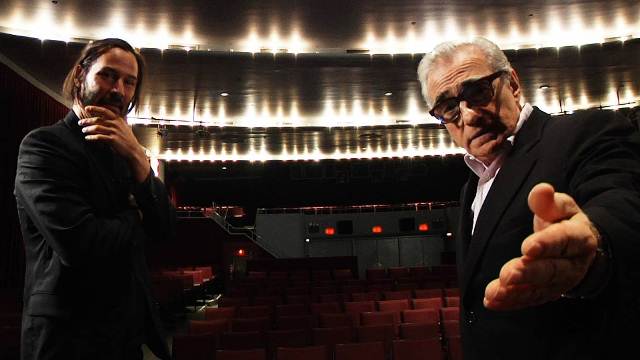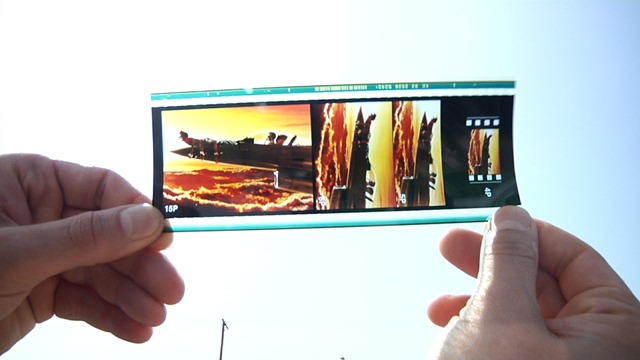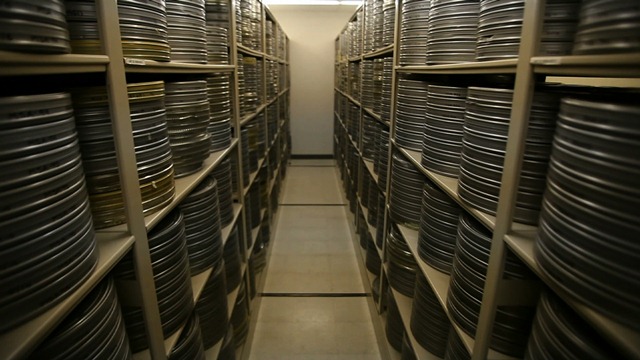CHICAGO – Patrick McDonald of HollywoodChicago.com appears on “The Morning Mess” with Dan Baker on WBGR-FM (Monroe, Wisconsin) on March 21st, 2024, reviewing the new streaming series “Manhunt” – based on the bestseller by James L. Swanson – currently streaming on Apple TV+.
Influential Filmmakers Discuss Digital Revolution in ‘Side by Side’
 Rating: 3.5/5.0 |
CHICAGO – We are at the tipping point of a technology that has been used for a hundred years to capture the moving image. Shooting on film is going away as more and more filmmakers use digital technology to tell their stories. How does this change the art form? Is it a creative new landscape or the death of something important? Keanu Reeves guides us through this minefield of opinions in the excellent “Side by Side,” opening this weekend at the Siskel Film Center and now playing On Demand.
The first thing one notices about “Side by Side” is the pedigree of the interview subjects chosen to discuss this incredibly interesting topic — James Cameron, Martin Scorsese, George Lucas, David Lynch, Christopher Nolan, David Fincher, Steven Soderbergh, Robert Rodriguez…the list goes on and on. How the digital revolution has impacted the art of film, positively and negatively, is clearly a subject about which many of our greatest artists have an opinion. And yet “Side by Side” doesn’t give too much weight to either half of the debate, correctly noting that the move to digital has both pros and cons while offering a rather detailed history of how we got here.

Side by Side
Photo credit: Tribeca Films
There are a lot of technical elements to “Side by Side” — details on how color timing works, the developments of specific cameras, etc. — that will be of interest to techno-philes but what I found most curious was the creative voices and their varied responses to the technology. Most of them aren’t overly surprising. David Fincher likes the control given to him by digital. Christopher Nolan likes the artistry of actual film. But for every artist and technician on one side of the debate, there’s an equally persuasive argument on the other side. Yes, film has a “purity” and artistry to it but digital allows for a number of creative doorways to open that are otherwise closed.
How does digital filmmaking change how we make movies? It’s mostly an immediacy and freedom. Actual film runs in ten-minute spurts between reloads and you can’t see what you have until the next day. With digital, you can shoot for hours and see immediately what you want to change on-set. And here’s the dividing line. Can an art form be too controlled? Joel Schumacher speaks of an actor who wanted to see every take on the digital display. Does it lose something organic to have something so controlled or does it give our most creative voices more of a chance to refine their visions? Does the freedom of everyone being able to make a movie mean more good movies or less because there isn’t a “tastemaker” involved? How about the argument that film will never be “format obsolete” because it’s both artistic and archival in that all you ever have to do is shine light through it? There are so many unanswered questions.

Side by Side
Photo credit: Tribeca Films
One of the most interesting things to me about “Side by Side” is the ripple effect the technology has had on the industry. The film makes a case that “The Celebration” and “Star Wars, Episode II: Attack of the Clones” were two of the most influential films of the last two decades. The former, credited as the first Dogma 95 film, was shot by Anthony Dod Mantle on a handheld digital camera. It not only kickstarted an industry of independent film that made video a viable alternative to film but inspired major names like Danny Boyle, who saw the film and called its cinematographer to shoot “28 Days Later” (the two would later win Oscars for “Slumdog Millionaire,” the first cinematography Oscar winner for a movie shot almost entirely on digital). At the same time, “Attack of the Clones” was the first major blockbuster shot entirely on digital and it influenced people like Robert Rodriguez, who didn’t realize how he could make “Sin City” until he saw it.
“Side by Side” does get a little dry when the film goes into the technical history of how digital has impacted visual effects. Some of the material about the making of “Avatar,” for example, feels a bit like behind-the-scenes featurettes on a Blu-ray or DVD. I wished the film would stay more focused on the impact of the technology instead of how often it explains how it actually works.

Side by Side
Photo credit: Tribeca Films
It’s not like “Side by Side” presents much of a choice or issue still in debate. From blockbusters to indies, more and more people are shooting, editing, and constructing film digitally. Vittorio Storaro, the cinematographer of “Apocalypse Now,” among many others, says it perfectly when he says, “Cinema today is a mixing of art and technology.” In many ways, it always has been. It’s just that the new technology has allowed for new tools for artists. As it always has been and always will be, it’s not the actual technology but how the artist uses it that means the most to film and if this new revolution is inspiring artists like Fincher, Lynch, Boyle, and Rodriguez to craft their art in new ways, it’s the quality of the art that will decide its historical importance.
 | By BRIAN TALLERICO |


